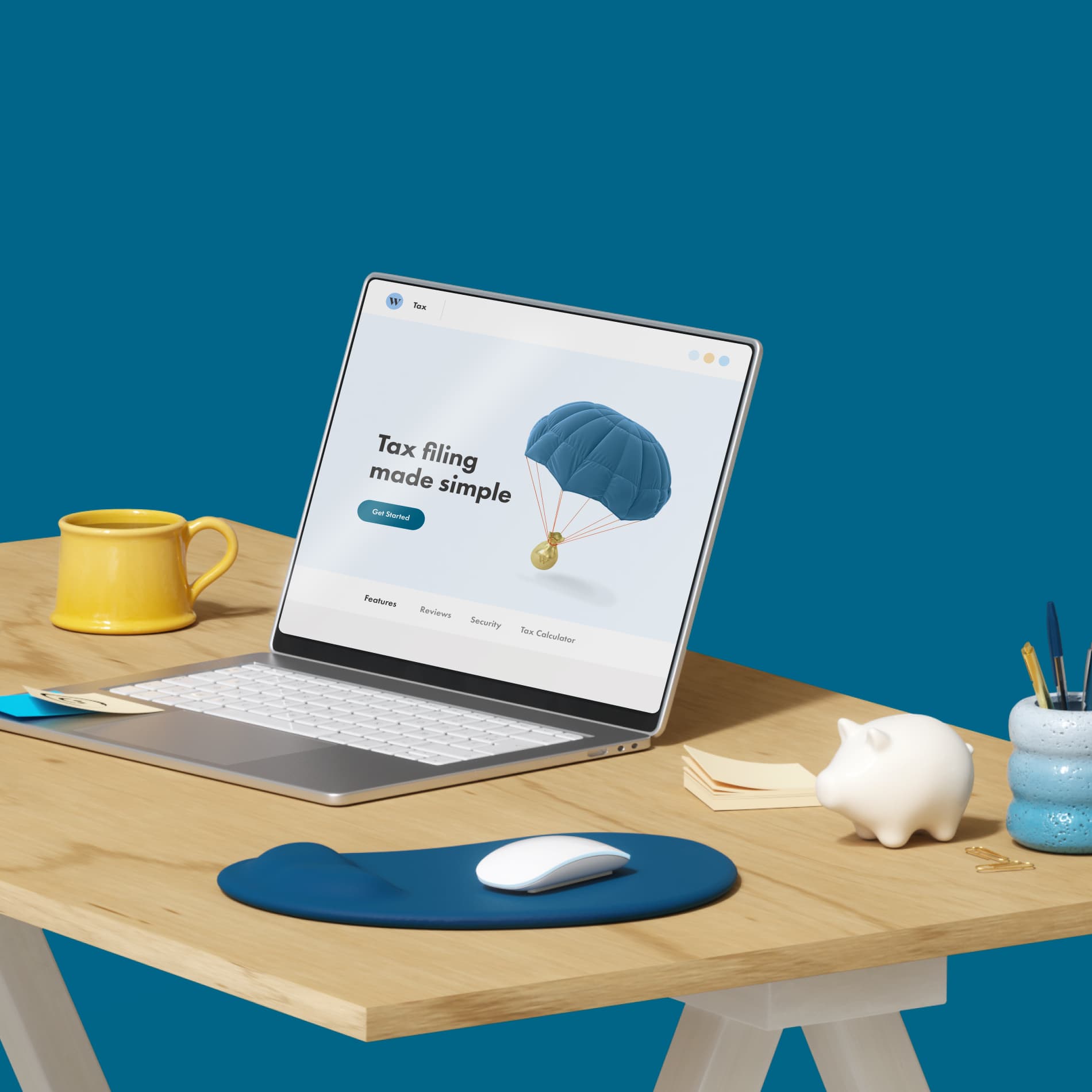
Finance for Humans
How to Afford to Take the Parental Leave You Want
If you plan well, you'll be able to put the financial panic of a new baby to the back of your mind and concentrate on what's really important: panicking about being a parent.
Wealthsimple makes powerful financial tools to help you grow and manage your money. Learn more
Wealthsimple is a whole new kind of investing service. This is the latest installment of our “How To” series, where we lay out smart and easy-to-understand advice on navigating the financial world.
I’m a planner by nature. I like to research. I like to weigh the pros and cons. If I had that instinct before I became a mother, it really kicked in when I became pregnant with my first child. I read books. I found all kinds of motherhood forums on the internet and I posted on them. I sought out every mom I knew and deposed each one as if she were the subject of a parliamentary investigation. But if motherhood is a lesson on preparedness, it’s also a lesson in the inability to prepare for everything. As someone recently told me about motherhood: you don’t know what you don’t know. And the thing I didn’t know that I didn’t know? How to plan, financially, for the year I took off during maternity leave.
Here’s a guide for what to expect (and how to pay for it) when you’re expecting.
Part One: Understand Exactly What Your Government Benefits Will Provide
Congratulations! You're about to experience, as a writer once memorably put it, All Joy and No Fun! And you should be able to afford to be around as much as possible for it. Parents, doctors, people who study things, babies — they all agree. Parental leave is crucial. The more the better in most cases. A lot of experts think six months is the optimal amount of time to take off after your baby is born. The main question facing most of us is: how? And the main answer for most of us is: paid leave provided by the government.
Every country is different when it comes to parental leave. In America? You are guaranteed exactly zero in the way of paid parental leave. In the U.K.? You’re guaranteed six months. In Canada, you're entitled to three different types of leave: pregnancy leave, which is up to 17 weeks of unpaid leave; maternity leave, which is paid and lasts up to fifteen weeks for birth mothers (and can start up to 12 weeks before birth); and parental leave, also paid. If you're a mother who took pregnancy leave, you're guaranteed up to 35 weeks of leave; mothers who did not take pregnancy leave are entitled to 37 weeks of parental leave, as are fathers.
But what does paid leave really mean? That Ottawa simply replaces your salary while you’re home learningto swaddle? No. There are 12 nations in the world that offer full compensation during parental leave, but Canada is not one of them. In Canada parents receive 55% of their gross income, up to $543 per week. There are subsidies available for households with incomes of $25,000 or less.

Sign up for our weekly non-boring newsletter about money, markets, and more.
By providing your email, you are consenting to receive communications from Wealthsimple Media Inc. Visit our Privacy Policy for more info, or contact us at privacy@wealthsimple.com or 80 Spadina Ave., Toronto, ON.
In sum, you can recieve 15 maternity leave plus 37 parental leave which equals 52 total weeks of leave at 55% of your salary. The rules were changed last year so parents can take up to 18 months. If you opt for that, you won't be paid the same amount per week. You'll get the same total benefit, but the money will be spread out over more time —15 weeks of maternity leave at the 55% rate, and the next 61 weeks of parental leave at 33%.
And you don’t have to be the biological parent to qualify for parental benefits. According to Employment Insurance (EI) rules, adoptive parents also qualify for up to 35 weeks of parental leave benefits. Though non-biological parents do not qualify for the 15 weeks of maternity benefits (which is reserved for birth mothers).
Part Two: The Benefits Won’t Just Magically Appear When You Have Your Baby
In order to get paid parental leave in Canada, you have to ask. Just apply for EI, or QPIP in Quebec – it’s easy, just go to Service Canada. It’s a good idea to have as much of the application ready before your kid arrives and you never have free time again, but you won’t be able to finalize the application until the birth (the forms require you to provide things like date of birth).
Is there fine print that can be a little confusing? Of course there is. It’s the government. For instance: EI benefits can only be claimed within the year following your baby’s birth. And: after you submit your application there will be a two-week waiting period before you’ll receive any funds (so plan on not having money coming in for those weeks).
Or this: during the fifteen weeks maternity leave, you can't earn any money. But once maternity leave is over and parental leave starts, the parent on leave is allowed to earn up to $50 per week, or 25% of their weekly EI benefit, whichever is higher. There's even a pilot plan that may allow some parents to hold onto more of your EI benefits even if you keep working. Again, get in touch with Service Canada or talk to an accountant to figure out how to navigate all the legalese.
While you’re on the mc’puter (as my youngest son calls it), don’t forget to apply for the federal government’s Canada Child Benefit (CCB) program. The monthly tax-free benefit is just money from the government to help pay for a kid. Parents get up to $6,400 per year for each child under the age of six, and up to $5,400 per year for each child between the ages of six and 17. How much you get depends on your income: households with income of less than $30,000 get the max, and the amount of the benefit goes down as household income goes up.
And lastly: sign your child up for their Social Insurance Number. Yes, this is the number that allows your kid to get a job. We are not advocating for infant labour (though if your child should get a lucrative baby shampoo commercial modelling contract, it wouldn’t hurt!) But you’ll also need that SIN to open up a Registered Education Savings Plan (RESP)—you’re opening an RESP because you want to save for your child’s education and you also like free money, right?
Part Three: If You’re Freelance, You Need to Plan Ahead
This is critical. If you’re part of the gig economy (or, as we used to say in like 2015, self-employed) there are some rules attached to your benefits. First, in order to qualify to receive benefits, you have to have accumulated 600 hours of employment (that's 15 weeks of work at 40 hours per week) during which you contributed to EIduring the 52 weeks before your baby arrives. This doesn't just apply to freelancers.
If you know you’ll be trying to have a baby soon, make sure you accrue those necessary hours, even if it’s at a part-time job. Here’s a good tip: a friend of mine took a barista job at Starbucks for while – it helped her qualify. To meet the threshold all she needed was to put in four months of work, based on a 37.5-hour work week.
Part Four: Find Out What Your Company Can Do For You
Some Canadian companies offer benefits packages that include parental leave top-ups. There are different types of plans. Some employers pay 100% of your salary for the first two weeks until the federal EI program kicks in, and an additional 15% to 30% of income for the 15 weeks of maternity leave. There are more generous firms that offer employees 100% of their salary for up to 26 weeks. At Wealthsimple, for instance, we top up both birthing and non-birthing parents so they receive 100% of their salary for the first three (non-birthing parents) or six (birthing parents) months of parental leave. Some employers also provide paternity leave — but these benefits are usually not as robust as maternity leave packages.
The first thing you should do when you’re planning to have a baby is to ask your employer (if you have one) exactly what their plan is. Read the fine print. Ask your HR manager. At large corporations, packages may differ depending on your salary. If your employer doesn’t offer a top-up plan, there may other ways to leverage your company’s benefits. For instance, if you’re too ill to work during your pregnancy, you are entitled to 15 weeks of sick leave benefits.
Part Five: Make a Budget
Budgeting. It sounds tedious. Maybe even frightening.But you’re a parent now, so the era of shirking responsibility is over. (That’s even more frightening!) But you can make it relatively simple.
First try this trick: try living off the income you’ll get from EI. If you can drop your spending by 45% and not, you know, lose your house, that’s a good sign. And don’t forget taxes. Even if the money’s coming from the government, it’s still considered income—and income is taxable. So those benefit cheques may be even smaller than you expected.
The good news is that your expenses may go way down — no commuting-to-work expenses; no going-out-for-birthday-lunches-for-colleagues-you-don't-really know expenses; and, for the time being, a lot less spent on things like booze and paying a scalper for Drake tickets. The bad news is you’ll need to account for some other, new expenses. Because: kids. They like to blow through your money, starting right at the beginning. Here’s a guide to the major expenses you’ll have to prepare for:
Childbirth expenses: Hospital costs are covered. Whew! But there may be extra costs for some prescription drugs, as well as a doula or a midwife if you go that route.
Adulting-Up expenses: If you don't yet have a will or life insurance, this is the time to make that move, and to budget for it. According to LegalZoom, costs to have a basic will drawn up by a lawyer run from $100-$1500. For a good overview of how much life insurance you need (beyond what your job may already offer in your benefits package), check out this Forbes story. And, of course, adoptive parents should factor in the legal expenses of that process, too.
Actual baby stuff expenses: The good news: It’s a common misconception that baby stuff is expensive. First, much of it is typically a one-time sunk cost, as cribs and carseats are passed down sibling to sibling. Second, most gear simply isn’t necessary, especially in the first six months. (Google “small house parenting” for proof.) You do not need a baby-food maker, or a wipe warmer, or a top-of-the-line baby monitor that measures baby's breathing. While there are some other things you may not have thought of that you may decide you want: a CPR course (figure $150), someone to help you sleep train ($500+), and more than one breast pump, plus accessories. A typical pumping set up costs about $300, or rent a hospital-grade deluxe version (retail cost: $2,000) for about $100 a month.
Self-care expenses: Please, if you can afford it, baby yourself a little, too. Your kid, your partner (and you, yourself) will be a whole lot happier. Budget in some fitness classes, some new clothes that fit your new body—and of course, childcare for every minute you take away from your kid for yourself. My advice: Do not feel guilty, as long as you’re not going into debt to pay for this stuff. The ROI outweighs the cost.
As with any budget, the first thing to do is pay down any high interest debt you have out there. I’m talking about credit cards, mostly. That will help you save more in the long run.
Part Six: Fund Raise for Your Leave
Maybe you want to take the full 18 months off. Maybe you don’t have employer benefits to supplement EI. Or maybe, like most of us, living off 55% of your income just isn’t do-able for months at a time (and you really want to have time with your new baby). In this case, the thing to do is build a war chest. Or whatever you want to call your slush fund for being a new parent.
Now that you have a good idea how much you need from your budget, make a plan to have that much money ready when the baby arrives. No, credit cards are not a good answer. Your parents? A fine answer as long as a) they are willing and b) they aren’t filching from their retirement savings to do it; that’ll just mean more stress down the road. But the best thing to do is to create a slush fund. If you’re a salaried employee, start by opening a dedicated savings account (one nice name for it could be: “Money For Baby Don’t Touch”) and setting up an automatic deposit to that account from every paycheque.
A baby shower can also help save resources. I didn’t want to even have one of those until my best friend sat me down and told me I was wrong. Her rationale: “We love you, we want to celebrate your good news, and it takes a village to help pay for all the stuff you’ll need.” I ended up throwing a pot-luck, UFC-themed baby shower (I like Jujitsu!) and the 30 or so people who attended had a smashing time. Plus, we walked away with piles of practical stuff: a baby crib, a rocking chair (this is something you may want even if you think you don't), tons of blankets, diapers, a sound machine, and loads of other stuff. Many items ended up in use with both my boys and once I was done, I was happy to pass it on to the next expectant moms.
But don’t be shy about asking for a gift that can be most useful to you as you prioritize having time with your child: cash. While it might seem gauche, remember: Parents that have gone before you know how expensive it is to kit-out baby’s first year. Some people do it with a kickstarter, some people ask people to bring cash instead of a gift. Either way, don’t ask people who you feel might have trouble affording it. Just tell them you’d love them to babysit for an hour sometime.
Part Seven: Now Forget Everything and Enjoy Yourself
The point of worrying should be to, at some point, stop worrying. This is true about everything when you have a kid – you can’t possibly plan for every single negative thing that might befall your child, so control what you can and try to have fun the rest of the time. Now’s the time for the most important advice of all: Ease up. Almost every single money coach, financial planner and investment advisor I’ve ever spoken with agrees that the early years of child rearing are some of the most expensive years of your life. So, it’s perfectly OK to ease up on some your savings and investment goals. Just for a little while – otherwise you’ll cause yourself more stress later. Prioritizing and making sure you, baby and spouse are healthy and happy is far more important than pretty much anything else.
So ease up. It’ll all get done, eventually.
Wealthsimple makes smart investing simple and affordable.
Wealthsimple's education team is made up of writers and financial experts dedicated to making the world of finance easy to understand and not-at-all boring to read.










